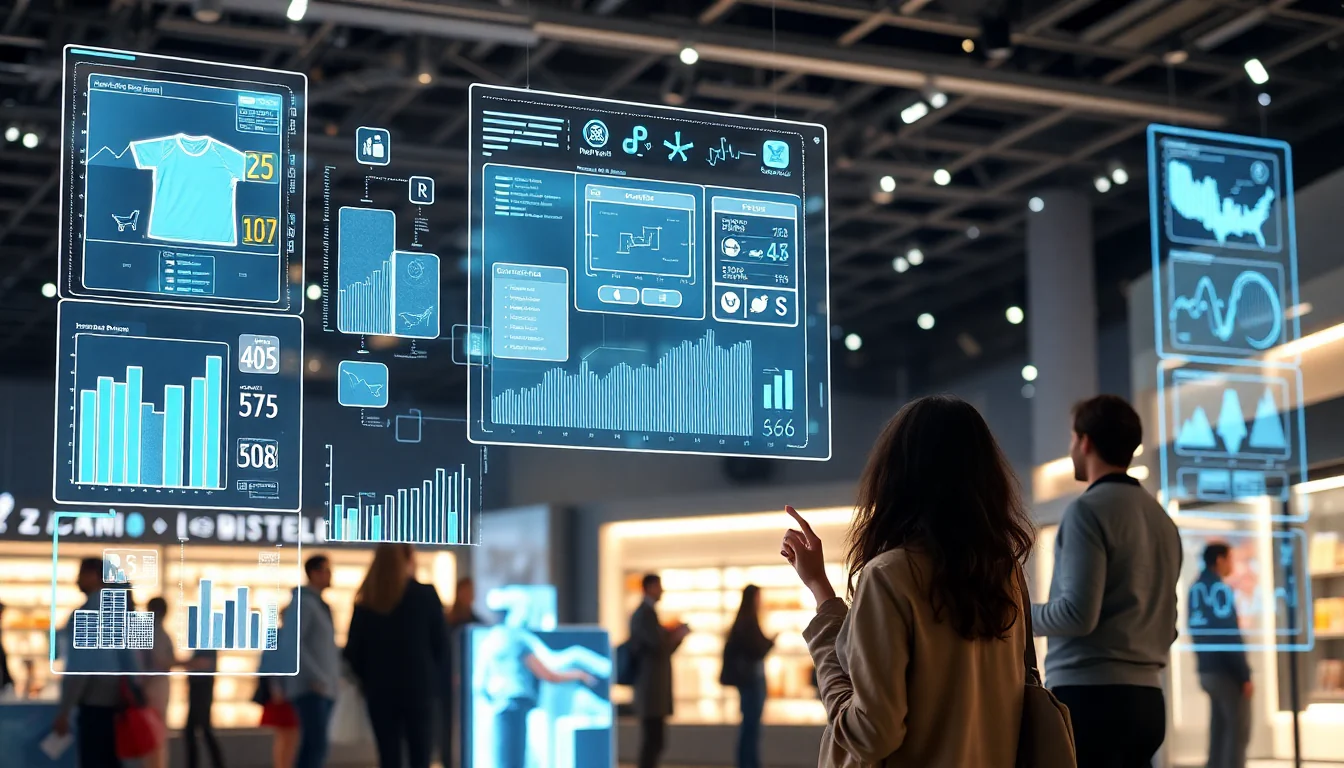

As we enter the year 2025, the landscape of e-commerce is rapidly evolving, and Shopify, the leading platform for online businesses, is at the forefront of this transformation. In this blog post, we'll dive into the fascinating trends that are shaping the behavior of Shopify users, providing valuable insights for entrepreneurs, marketers, and anyone interested in the future of digital commerce.
The Rise of Personalized Shopping Experiences
In the ever-competitive world of e-commerce, the demand for personalized shopping experiences has reached new heights. Shopify users in 2025 are no longer satisfied with generic product recommendations or one-size-fits-all marketing campaigns. They crave a tailored approach that speaks directly to their unique preferences and needs.
Leveraging advanced data analytics and artificial intelligence, Shopify merchants are now able to create hyper-personalized shopping journeys for their customers. From dynamic product displays to customized email campaigns, the level of personalization has reached new levels, resulting in increased customer engagement, loyalty, and ultimately, higher conversion rates.
The Power of Predictive Analytics
One of the key drivers behind this personalization revolution is the widespread adoption of predictive analytics. Shopify's robust data-driven tools allow merchants to anticipate their customers' needs and preferences with remarkable accuracy. By analyzing browsing behavior, purchase history, and demographic information, businesses can now make informed decisions about product recommendations, pricing strategies, and marketing campaigns.
This predictive capability empowers Shopify merchants to stay one step ahead of their customers, delivering the right products and offers at the precise moment they're needed. As a result, customers feel understood and valued, fostering a deeper connection with the brand and a higher likelihood of repeat business.
The Rise of Social Commerce
The integration of social media platforms with e-commerce has been a game-changer for Shopify users in 2025. Platforms like Instagram, TikTok, and the newly-launched Metaverse have become seamless extensions of the online shopping experience, blurring the lines between social interaction and commercial transactions.
Shopify merchants are now leveraging the power of influencer marketing, shoppable posts, and immersive virtual experiences to drive sales and build brand loyalty. Customers can now discover, explore, and purchase products directly within their favorite social media apps, creating a frictionless and engaging shopping journey.
The Importance of User-Generated Content
Alongside the rise of social commerce, user-generated content (UGC) has become a crucial component of Shopify's success in 2025. Customers are no longer passive consumers; they are active participants in the brand's narrative, sharing their experiences, reviews, and product recommendations with their social networks.
Shopify merchants are embracing this trend by encouraging and curating UGC, leveraging it to build trust, authenticity, and social proof. From showcasing customer testimonials to featuring user-created product videos, Shopify businesses are harnessing the power of their community to drive sales and enhance their brand's reputation.
The Shift Towards Sustainable and Ethical Consumerism
As environmental and social consciousness continues to rise, Shopify users in 2025 are increasingly prioritizing sustainability and ethical practices in their purchasing decisions. Shopify merchants who align their businesses with these values are reaping the rewards of a growing segment of eco-conscious and socially responsible consumers.
The Demand for Transparency and Traceability
Shopify users in 2025 are no longer satisfied with vague claims of sustainability or ethical sourcing. They demand transparency and traceability, wanting to know the origin of the products they purchase, the materials used, and the labor practices involved in their production.
Shopify merchants who embrace this trend by providing detailed information about their supply chains, manufacturing processes, and sustainability initiatives are building trust and loyalty with their customers. This level of transparency not only resonates with eco-conscious consumers but also positions the business as a responsible and trustworthy partner.
The Rise of Omnichannel Experiences
In the ever-evolving world of e-commerce, Shopify users in 2025 expect a seamless and integrated shopping experience across multiple channels. The days of siloed online and offline retail are long gone, as Shopify merchants embrace the power of omnichannel strategies to meet the demands of their customers.
The Blending of Digital and Physical Retail
Shopify merchants are now leveraging a range of innovative technologies to create a cohesive shopping experience that bridges the gap between online and offline channels. From augmented reality-powered virtual try-on features to in-store kiosks that sync with customer accounts, the lines between digital and physical retail are becoming increasingly blurred.
This omnichannel approach allows Shopify users to engage with brands on their own terms, whether they're browsing products on their smartphones, visiting a physical store, or a combination of both. By providing a seamless and consistent experience across all touchpoints, Shopify merchants are able to build stronger relationships with their customers and drive increased sales and loyalty.
The Emergence of Voice-Powered Commerce
As voice-activated assistants like Alexa, Siri, and Google Assistant continue to gain widespread adoption, Shopify users in 2025 are embracing the convenience of voice-powered commerce. Shopify merchants are now optimizing their online stores and product listings to be easily discoverable and purchasable through voice commands, catering to the growing demand for hands-free shopping experiences.
The Importance of Voice Search Optimization
Optimizing for voice search has become a critical component of Shopify's success in 2025. Merchants are leveraging natural language processing and machine learning to ensure their products and services are easily found and purchased through voice-activated searches. This includes optimizing product descriptions, titles, and metadata to align with the way customers naturally speak and search.
By embracing voice-powered commerce, Shopify merchants are able to reach a new segment of customers who prefer the convenience and efficiency of hands-free shopping. This integration of voice technology into the e-commerce experience has the potential to revolutionize the way Shopify users interact with and purchase products in the years to come.
Conclusion
As we look towards the future of Shopify in 2025, the trends we've explored in this blog post highlight the evolving needs and expectations of Shopify users. From the rise of personalized shopping experiences and social commerce to the growing demand for sustainability and omnichannel integration, Shopify merchants who adapt and innovate will be well-positioned to thrive in this dynamic and ever-changing landscape.
By staying ahead of these trends and continuously enhancing the user experience, Shopify businesses can build stronger relationships with their customers, drive increased sales, and solidify their position as leaders in the e-commerce industry. The future of Shopify is bright, and the opportunities for growth and success are abundant for those who are willing to embrace the changing tides of the digital marketplace.